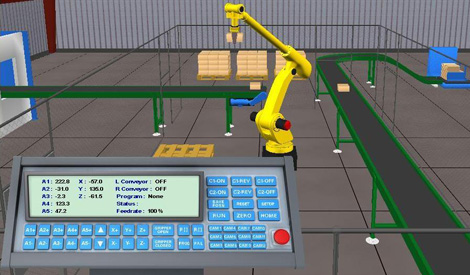Raptor Reliability Simulation Software Software Free Download
The latest version of Raptor can be downloaded from raptortech.com/getstarted or from the links below. Be sure to verify if you are running a 64bit or 32bit machine. A program is underway at Sandia National Laboratories to predict long-term reliability of photovoltaic (PV) systems. The vehicle for the reliability predictions is a system performance model, currently being run under a simulation software called GoldSim™. The model includes inputs for module performance, irradiance, and degradation.
Reliability and Availability Software Availability Workbench is our flagship suite of availability simulation software. It includes the latest versions of Isograph’s AvSim+ and RCMCost software for system availability simulation and reliability centered maintenance.

In addition it includes Weibull Analysis and Life Cycle Costing modules. Availability Workbench is used to optimize maintenance and spares policies, predict system availability and throughput and estimate life cycle costs. It includes well known modeling methods such as FMECA, Reliability Block Diagram Analysis and Fault Tree Analysis. An integrated visual environment in which failure rate and maintainability prediction, FMECA, Reliability Allocation, Reliability Block Diagram, Fault Tree, Event Tree and Markov analysis are combined.

Failure rate predictions are calculated from the Telecordia, MIL-HDBK-217, 217 Plus and IEC TR 62380 standards for electronic equipment and the NSWC-98/LE1 Handbook for mechanical parts. FMECA, Reliability Block Diagram and Fault Tree analysis are performed to well-known standards such as MIL-STD 1629 and IEC 61508. One of the commonly used techniques in the preliminary phase of a safety study is a hazard and operability study. Hazop+ provides a familiar visual environment in which to design and use the study and action forms that are the basis for entering Hazop information. Extensive reporting facilities are available.
Cvetomuzika na ekrane monitora programmu. (For RILM's coverage of music journals and other document types, see non-music non-priority, journal, Cahiers musique, culture: Programme musical de France-Culture, France, 1981. Journal, CVE, United States. Journal, 0013-3302, Ekran: Revija za film in televizijo, Slovenia.
Network Availability Prediction enables users to predict the availability and reliability of communication networks. The network availability model utilizes an extended Reliability Block Diagram (RBD) methodology that addresses the specific characteristics of network elements and their connections. In addition to predicting network availability Network Availability Prediction also provides criticality rankings that identify weak spots in the network. Network Availability Prediction provides many time-saving features to allow users to quickly construct the network diagram.
These include a parts library facility that allows users to import their parts data in convenient groupings, a network element library facility that allows users to construct common network element diagrams and a fully interactive network diagram construction facility. Attack trees allow threats against system security to be modeled concisely in an easy to understand graphical format.
The effectiveness of internet security, network security, banking system security, installation and personnel security may all be modeled using attack trees. With the increased risk of terrorist attacks on homeland security, hacking attacks on computer systems and computer-based fraud on banking systems, AttackTree+ is an invaluable tool to system designers and security personnel. AttackTree+ provides a method to model the threats against a system in a graphical easy-to-understand manner.
RAPTOR is an innovative software designed for accurate protein structure prediction. It combines advanced analysis tools in one integrated software solution and provides three different threading methods. RAPTOR's unique integer programming optimization approach is most effective for finding structure templates of targets with low sequence homology and is able to generate high quality models. The easy-to-use interface and easy-to-understand E values are ideal for beginners and experts.
Above all, the intuitive display of the output enables users to understand the results simply at a glance. Given a target protein sequence, if there is a homologous protein with known 3D structure, it can be found by using sequence search tools like PSI-BLAST, also provided in RAPTOR. The target's structure is then built from the known structure; however, when the sequence homology is not significant, i.e. Less than 25%, PSI-BLAST can not come up with a confident hit.
Unlike PSI-BLAST, which simply does a sequence search, protein threading, fold recognition, makes use of both homology and structure information. It scans the protein sequence with an unknown structure against a database of known structures.
By using a scoring function and conducting compatibility analysis between three-dimensional structures and linear protein sequences, the best structural template will be identified from which to build the sequence's structure. As a result, protein threading gives a superior prediction than homology modeling when there is marginal sequence homology.